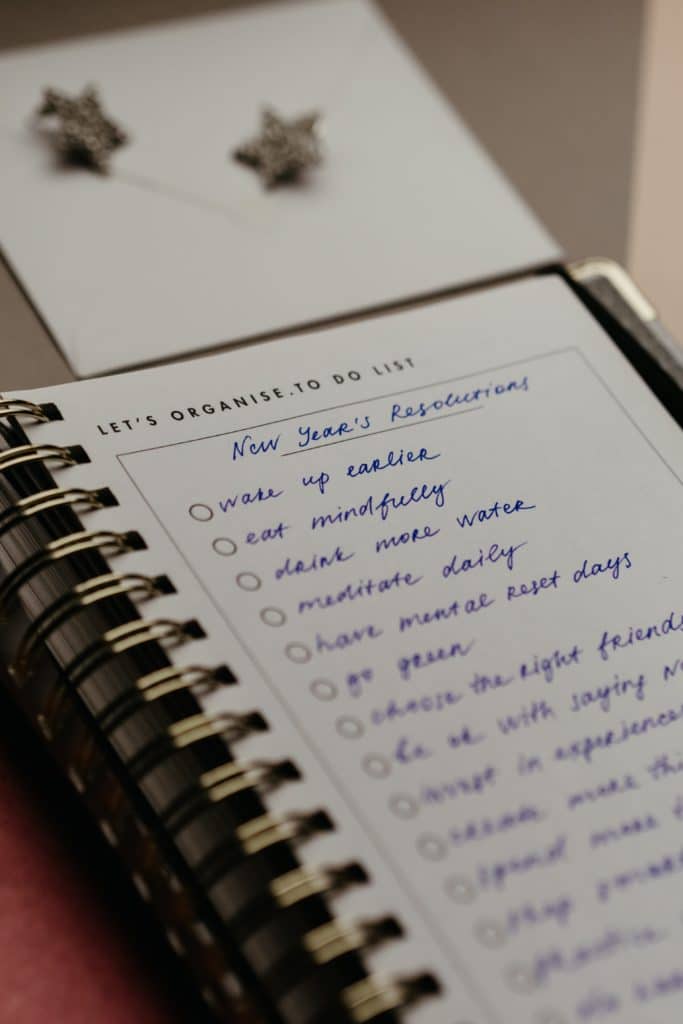Every January, humans make (and sometimes break) New Year’s resolutions. Much has been written on how to master the process, everything from discerning and focusing on your why, to turning when into actionable calendar items. Results vary as we engage the hard work of change in our personal and professional lives. At Circl.es, our work focuses on an overlooked but powerful dimension of change, one that might not emerge as readily when making resolutions: the who. How does one’s community augment not only personal growth á la annual resolutions, but also noticeable change in the workplace?

Our clients have experienced the transformation that happens when employees connect and grow together in small groups. Head of Platform at Union Square Ventures, Lauren Young, knows there’s no curriculum robust enough to keep up with the challenges facing executives in USV’s fast-growing portfolio: it’s not necessarily what those leaders need, but who–they need community with each other. As she puts it, “Leaders working at rapidly growing companies are constantly facing challenges that require a quick decision or response. One way we try to support leaders within our portfolio is by connecting them with peers who either have gone through that experience, or can provide a safe space to discuss and brainstorm ways to approach it.”
“Great leaders don’t move people around a board like pawns;
they cultivate conditions for growth”
Lauren practices what General Stan McChrystal refers to as the difference between “gardening” and “playing chess.” Great leaders don’t move people around a board like pawns; they cultivate conditions for growth. In his video The Leader as Gardener, McChrystal expands the metaphor: “A gardener grows nothing, plants do that–that’s what plants are designed to do, and they’re really good at it. But the gardener’s role is not unimportant…all the things the gardener does to create an environment and ecosystem allows the plants to do what they do, and do it very, very well.” Like plants, humans naturally circle and grow together, provided leaders present the right conditions.
When the pandemic deprived leaders of offices, campuses, and hotel event spaces, it forced intentionality and creativity as they grappled with how to create garden-like spaces where employees can gather and flourish. Priya Parker, in her book The Art of Gathering, discusses the sin of being a “chill” host at a party, “Chill is a miserable attitude when it comes to hosting gatherings … I want to convince you to assume your proper powers as a host.” Thoughtful hosts decide who needs to connect with whom, and with a little forethought, what topics they should discuss. Like a good party host, organizational leaders can use small groups to set the stage for deep connection. Fortuitously, this combats pandemic realities like disconnection, disengagement and loneliness.
“Like a good party host, organizational leaders can use small groups to set the stage for deep connection.”
Leaders increasingly look for learning groups for themselves, many joining professional cross-company learning communities that connect them with others working on similar projects. Despite limited ability to gather in-person, our clients like YPO and Executive Networks reported record growth and renewals this year. New communities like Atlas One for sales professionals and Round for technology leaders emerged. Ryan Fuller, CEO of Round, says that “A vetted community rich with perspective and grounded in shared values provides unparalleled access to knowledge and opportunities from fellow members dedicated to helping each other.” Degreed upskilling platform has documented this shift from internal connection to connecting professionally between organizations–their data revealed that 62% of executives sought to learn from professional networks in 2019, and we believe the pandemic has accelerated this trend.
This movement is consistent with an approach known as communities of practice, a term Ettiene Wenger-Traynor coined while studying the ancient system of apprenticeship. His studies informed him that many have long misunderstood the role of an apprentice’s master: traditionally, apprentices actually spent very little one-on-one time with masters–like the plants in McChrystal’s garden, apprentices mostly learned from each other. As we heard him say in a recent workshop: “finding the knowledge we need to solve today’s problems starts with coming together in uncertainty and figuring it out. We even saw university presidents form peer groups to figure out Covid.”
Those of us who have taken a class from an expert or read a book alone have experienced the absence of such a community; we emerge swamped with expertise, yet starved for the practice and peer support that produces true change. Many leaders we work with also describe falling into another trap: while they may successfully group employees or community members together through directories, social media groups, and email newsletters, the results have been lackluster. As pointed out by Gina Bianchini–founder of the community management platform Mighty Networks–these large, flat groups are truly social media–that is, one-way communication that most of us passively consume, making it the junk food of human connection. Actual conversation and connection are vital to transformational small group communities.

“Actual conversation and connection are vital to transformational small group communities.”
In contrast, our partners are proving that small groups, like circles, elevate a community into a learning community, facilitating authentic connections and enabling social learning. The recipe is clear: gather a diverse cross-section of people with a common purpose. Foster a safe place. Watch as the power of peer connection pressures action, and taps into another great need–the desire to serve something beyond themselves. At this point, the community benefits just as much as the individual, as shared trust and vision compels greater job longevity and performance.
As February nears and we distill our lists of resolutions–some fade, and the right ones will inevitably rise to the top and stick–consider adding to your list of resolutions something that focuses not on why or how, but on who. Will we actively host our parties, tending the gardens of our companies and communities? We can not only improve the chances of seeing our own resolutions through; we can help create spaces and learning communities where others can thrive and become their fullest selves.
We’re here to connect with you.
[sg_popup id=”2304″ event=”click”]Get in Touch[/sg_popup]
Virtual hugs,
Dan
CEO, Circl.es
Interested in becoming a part of the Circl.es team? Check out our open roles.
